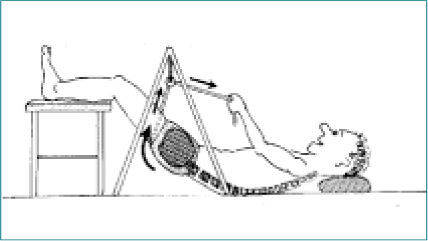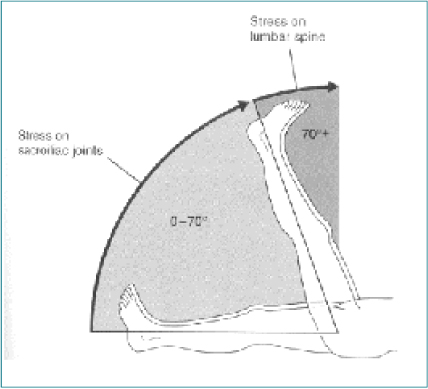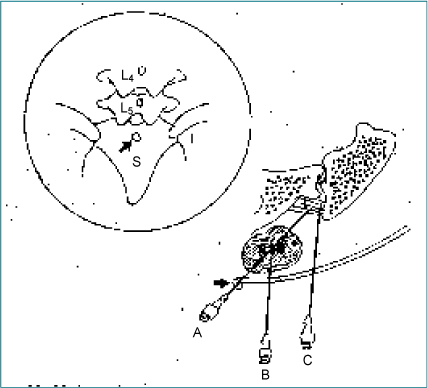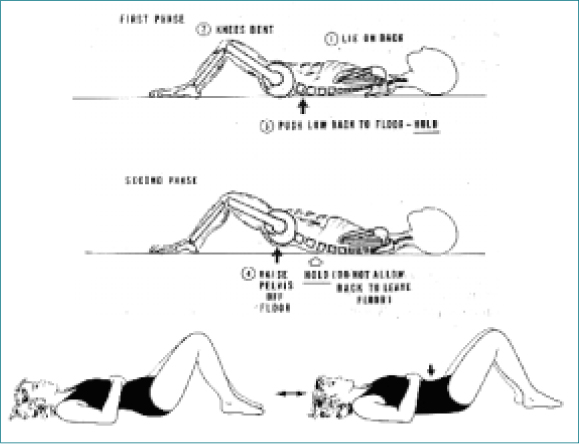J Korean Med Assoc.
2004 Sep;47(9):844-862. 10.5124/jkma.2004.47.9.844.
Pain Managements and Therapeutic Exercises of Lumbar Disc Herniations
- Affiliations
-
- 1Department of Physical Medicine and Rehabilitation, Kyung Hee University College of Medicine and Hospital, Korea. kimhsmd@chol.com
- KMID: 2183502
- DOI: http://doi.org/10.5124/jkma.2004.47.9.844
Abstract
- Most people experience episodes of low back pain that are usually brief, resolve spontaneously, and recur infrequently. The successful management of persistent low back pain requires that the treatment be directed to the pain-producing structures in the human body. The treatment of low back pain ranges from very simple and straight forward managements to very complex and intricate ones. Treatments for lumbar disc herniations can be conservative (75~90% of patients), invasive (5~10% of patients), or surgical (5% of patients). Resolution of the first lumbar disc herniation takes place in approximately 75% of patients over a period of 3 months. With recurrent herniations, the chance of spontaneous relief of symptoms decreases. In a very acute stage, the patients may require hospitalization to control the level of pain. Bed rest should be limited for 2 days with the most comfortable position of the knee and the hip flexion at about 80~90 degrees. A few days of bed rest, adequate analgesics, and muscle relaxants to reduce muscle spasm are usually required. Physical therapeutic modalities (including traction, heat, ultrasound, and electrical stimulation), mobilization, manipulation, back school, spinal supports, therapeutic exercise and proper position should be used and educated. If the low back pain is not controlled after these treatments, invasive procedures such as trigger point injection, facet or sacroiliac joint injection, epidural steroid injection, selective nerve root injection with high frequency heat therapy, or intradiscal injection may be implemented to alleviate the symptoms rapidly. Every patient should attend a class for spine education as part of the comprehensive management. Instructions should be given for low back care, especially as related to the activities of daily living. Participants will learn correct postures, pelvic tilting, knee-to-chest exercise, and exercises to strengthen abdominal and paraspinal muscles. Individual instructions are given to each patient, detailing the nature of the patient's particular problem and how he or she can make the best of the treatment.
MeSH Terms
Figure
Reference
-
5. Arokoski JP, Valta T, Airaksinen O, Kankaanpaa M. Back & abdominal muscle function during stabilization exercises. Arch Phys Med Rehabil. 2001. 82:1089–1098.6. Braddom RL. Physical Medicine & Rehabilitation. 2000. 2nd ed. Philadelphia: WB Saunders.7. Cailliet R. Pain series : Low back pain syndrome. 1995. 5th ed. F.A. Davis Company.8. Cox JM. Low back pain : mechanism, diagnosis and treatment. 1999. 6th ed. Boltimore: Williams & Wlikins.9. Delisa JA, Gans BM. Rehabilitation Medicine, principles and practice. 1998. 3rd ed. Philadelphia: Lippincott Company.10. Kirkaldy-Willis WH, Burton CV. . Managing low back pain. 1992. 4th ed. London: Churchill Livingstone.11. Leinonen V, Kankaanpää , Luukkonen M, Hanninen O, Airaksinen O, Taimela S. Disc herniation-related back pain impairs feed-forward control of paraspinal muscles. Spine. 2001. 26:E367–E372.
Article12. Mannion AF, Taimela S, Muntener M, Dvorak J. Active therapy for chronic low back pain : part 1. Effects on back muscle activation, fatigability, and strength. Spine. 2001. 26:897–908.13. Richardson C, Jull G, Hodges P, Hides J. Therapeutic exercises for spinal segmental stabilization in low back pain. 1999. London: Churchill Livingstone.14. Travell JG, Simons DG. Myofascial Pain and Dysfunction. 2000. illustrator: Barbara D. Cummings.15. van Tulder MW, Koes BW, Bouter LM. Conservative treatment of acute and chronic nonspecific low back pain : a systematic review of randomized controlled trials of the most common interventions. Spine. 1997. 22:2128–2156.
Article16. van Tulder MW, Malmivaara A, Esmail R, Koes BW. Exercise therapy for low back pain. Cochrane Database Syst Rev. 2000.
Article
- Full Text Links
- Actions
-
Cited
- CITED
-
- Close
- Share
- Similar articles
-
- Paramedian Tangential Approach for the Lumbosacral Extraforaminal Disc Herniations
- Experience with Microsurgery in the Herniations of Lumbar, Cervical and Thoracic Intervertebral Discs
- High Lumbar Disc Herniations
- The Comparisons of Surgical Outcomes and Clinical Characteristics between the Far Lateral Lumbar Disc Herniations and the Paramedian Lumbar Disc Herniations
- Lumbar Disc Herniations 'To Operate or Not' Patient Selection and Timing of Surgery

































